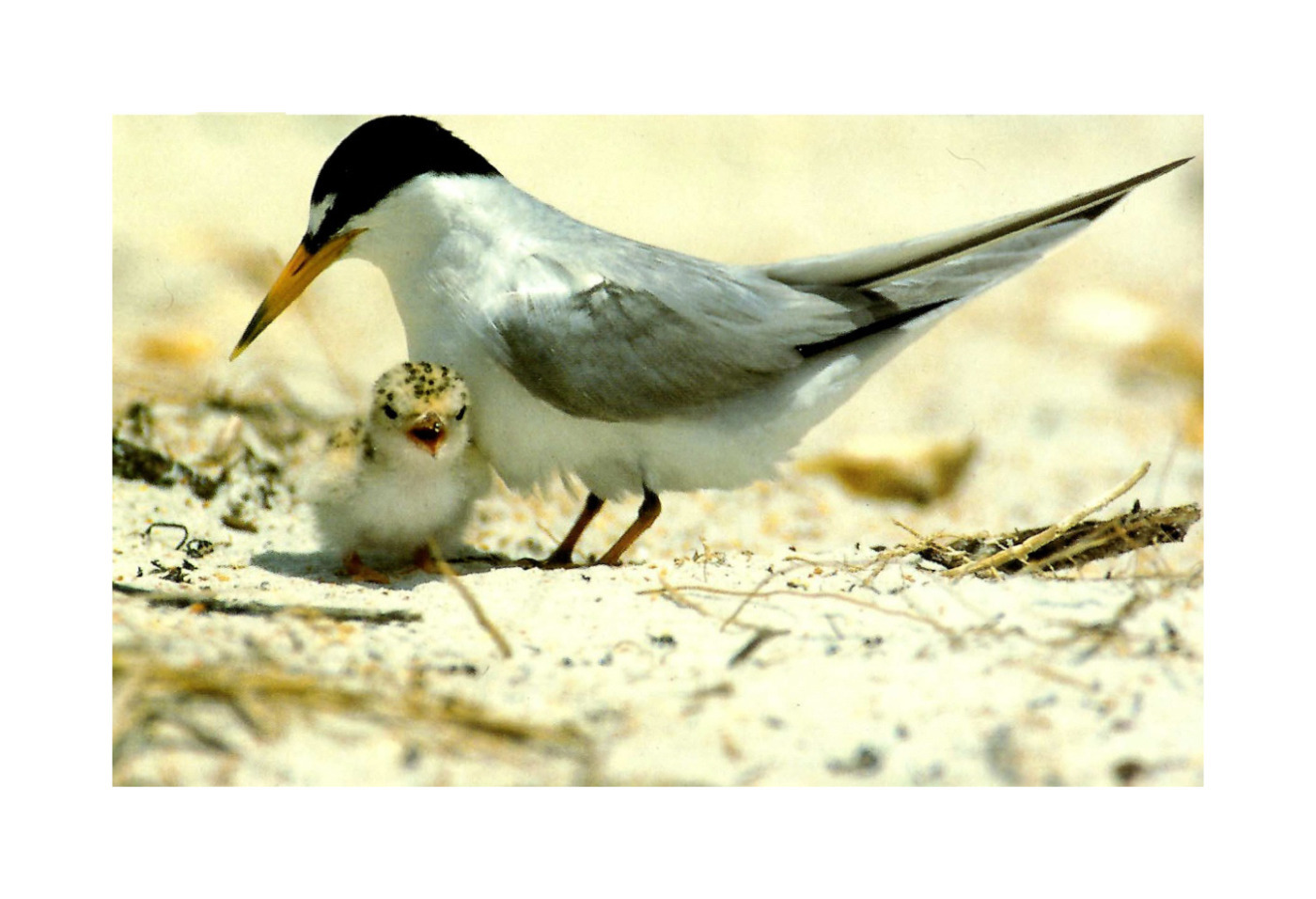Least Terns, a threatened species in Florida, were found nesting on the roof of the Nelson Poynter Memorial Library during a renovation project and are invited to stay. Courtesy of Amanda and M.C. Morgan
By Dinorah Prevost
For 20 years, a colony of endangered seabirds have made the roof of the Nelson Poynter Memorial Library their seasonal home. Their spring home, if you will.
Hidden from the view of the busy campus below, the Least Terns nest annually on the roof, but earlier last year, that home was under threat.
In spring 2017, the library’s roof needed to be redone.
“The Poynter Library needed a new roof surface on it because it got to the end of its life span. It lasted about 20, 25 years so it was time to be renewed,” said Edward Lewis, USF St. Petersburg construction project manager.
Meanwhile, its resident Tern colony was beginning to arrive, and construction would have prevented its nesting season. Least Terns are a type of shorebird that breed from March through September. Florida’s beaches are their traditional nesting habitat, but they also use flat, gravel-covered rooftops, such as the library’s roof.
So rather than disrupt the Terns, Lewis halted construction for months to allow them to nest.
“I met with the guys from (the Florida Fish and Wildlife Conservation Commission) and we spoke about the possibility of incorporating into the re-roofing project … an artificial beach (for the Terns),” Lewis said. “The Terns had traditionally nested on that building, as they had along a couple of the other (buildings on campus).”
The re-roofing was postponed until late September 2017 and completed this spring. The southwest corner of the library’s roof houses the Terns’ artificial habitat, which has a tar and gravel surface.
“They felt the southwest corner seemed to be where the Terns favored the roof because they’re quite small and they actually land and nest in amongst the stones (gravel) and they use it as cover,” Lewis said.
Jeff Liechty, Audubon Florida’s rooftop coordinator for the Tampa Bay area, monitors all area rooftop nesting, including the Poynter Library’s roof. He said Least Terns are a threatened species because they are losing their beach habitats to humans.
“Rooftop nesting came about when the Terns found quiet gravel rooftops offered a safer place to raise their young than the busy beaches,” Liechty said. “It is a reaction by the local Tern population to human development and its disturbance to … the open sandy beaches that are prized by beach-goers. Approximately half of the Least Terns in Florida now nest on gravel rooftops.”
Least Terns started nesting on rooftops in the 1950s, but those habitats are also being phased out.
“Unfortunately, many of these gravel rooftops are being replaced with alternative materials that are not suitable to the Least Terns, so they are slowly being pushed out of this alternative nesting habitat as well as their preferred beaches,” Liechty said.
A minor inconvenience to housing a colony of birds on a roof is increased bird droppings on sidewalks and parking lots nearby, according to Audubon Florida.
Lewis recently checked to see if the Terns returned to nest this year after the re-roofing.
“I went up there (with FWC officials) probably about two months ago… and had a look and there was a Tern activity. And we saw them buzzing around up there so the colony is still in existence,” Lewis said. “The next stage is that we have a camera…up there that will monitor them going up there.”
He’ll place the camera before March when the Terns start nesting again.
“It was really to keep the environment for them. Once they’re up there, they’re not really a bother to anyone,” Lewis said. “We don’t even share the space on the roof, it’s theirs.”



